As a classic element in home decoration, marble has become the material of choice in many homes and commercial spaces due to its unique texture and noble appearance. Whether it is in kitchen countertops, bathroom vanities, or other furniture and architectural decorations, marble can bring a luxurious and elegant atmosphere. However, along with its beauty and durability, marble countertops are expensive and complex cost structures.
Before choosing a marble countertop, it is important to understand its cost factors, installation complexity, and long-term maintenance costs. This article will analyze the beauty and cost of marble countertops in detail from multiple angles to help you make an informed decision within your budget.
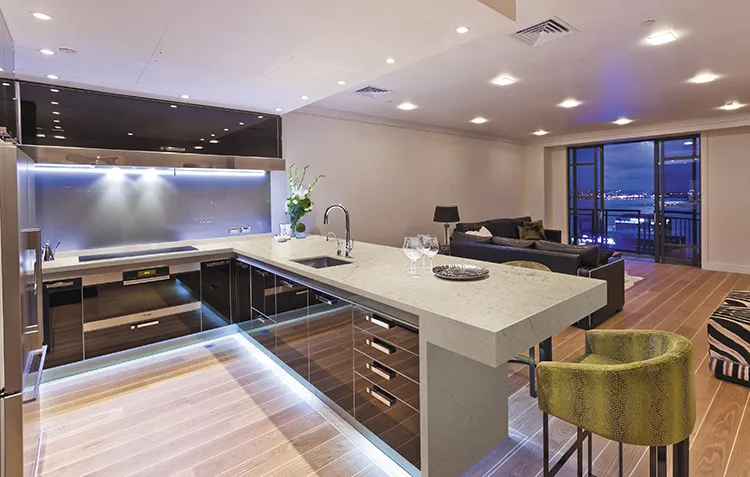
How much does a marble countertop cost per square foot?
The price of marble countertops is not uniform, usually fluctuating between $40 and $100 per square foot. The difference in this range is mainly affected by the following factors: type and grade of marble, size and thickness of the countertop, complexity of edge treatment, transportation costs, installation difficulty, location, and additional service fees. Overall, it is a series of interrelated cost factors that determine the final price of marble countertops.
Here’s a fun fact: most people would rather use marble slabs as counters than marble countertops. Why, you ask? Well, because slabs have fewer seams, it takes less effort to maintain flawless grout lines and make them look cleaner. But marble slabs can cost 40% to 60% more than tiles, so this extra luxury comes at a price.
Cost Factors of Marble Countertops
1. Marble Type
The prices of different types of marble countertops vary greatly. For example, Italian Carrara marble, known for its classic white and light gray veins, is usually more expensive; while Indian green marble is relatively cheap. The origin of natural marble and the scarcity of mineral deposits will have a direct impact on the price.
For example, Parthenon marble from Greece is naturally more expensive due to its historical and cultural background and scarcity. There are also specific geographical indications such as black Maracanda marble countertops and Ankara gray from Turkey, which make them more expensive in the market. Consumers need to make trade-offs based on their budget and preferences when choosing.
2. Marble Grade
Marble countertops are divided into different grades based on quality, and the specific grade differences are discussed in detail below. The differences in texture, color, surface smoothness, and durability of different grades of marble countertops lead to different prices. Generally speaking, high-grade marble is smoother, has less color difference, and has fine texture, so it is relatively expensive.
3. Size and Thickness
The size and thickness of marble countertops are an important factor in determining cost. The larger the marble countertop, the higher the cost of materials and cutting. In addition, thickness will directly affect the price. Generally, the thickness of the countertop ranges from 3/4 inches (about 2 cm) to 1 1/4 inches (about 3 cm). Thicker marble is generally stronger and more durable, but it is also more expensive. When choosing, consumers need to consider the frequency of use of the countertop and the required sturdiness, and then choose the appropriate thickness.
4. Transportation
Marble countertops are a heavy and fragile material, and the risks and costs during transportation are high. Especially long-distance or cross-border transportation involves not only the physical handling of the material, but also the possible risk of damage. Therefore, shipping costs account for a significant proportion of the total cost of marble countertops, especially for high-end marble imported from overseas.
5. Edge treatment
The processing of marble edges is also an important factor affecting the cost. Simple edge cutting is relatively cheap, while complex edge designs such as French curves or zigzag treatments will add additional processing fees. Different edge treatment methods not only affect the aesthetic appearance of the countertop, but also directly affect the complexity of installation and the final cost.
6. Installation complexity
The installation process of marble countertops is very demanding. Every step of the installation needs to be carefully measured, including the precise cutting, splicing and fixing of materials. In particular, countertops with curved edges or irregular shapes are more difficult to install, and labor costs will increase accordingly.
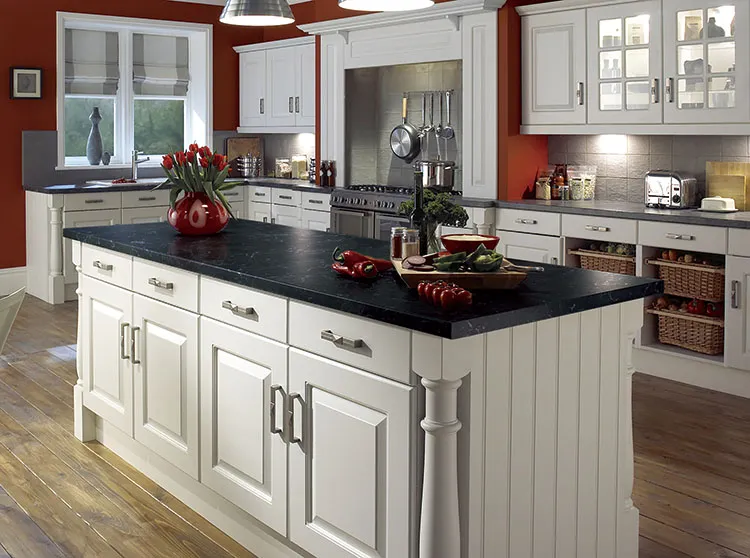
Cost of marble countertops by grade
Marble is usually divided into different grades based on its quality, color and texture uniformity, number of defects, etc. High-grade marble usually has a more exquisite appearance, smaller color difference, harder texture, and relatively higher price.
1. First-grade marble
First-grade marble countertops are usually the most expensive material on the market. It has extremely high quality and beauty, with a smooth and flawless surface and almost no cracks or variegated colors. Its color and texture are very uniform and suitable for high-end residential or commercial places. This kind of marble mostly comes from rare mining areas and has a higher cost.
2. Secondary marble
The appearance and texture of secondary marble countertops are close to the first grade, but there may be slight uneven texture or small range of color difference. For consumers with limited budgets but pursuing beauty, secondary marble is a more cost-effective choice.
3. Third grade marble
Although the price of third grade marble countertops is relatively low, its texture and color vary greatly, and there may be slight cracks or color spots on the surface. It is usually used for projects with more limited budgets, such as large-area commercial decoration or highly functional spaces.
4. Fourth grade marble
Fourth grade marble countertops are the cheapest materials on the market and usually contain more defects, such as cracks, large color differences, and messy textures. This type of marble is suitable for temporary building decoration or low-budget decoration projects. Although the price is low, its beauty and durability are obviously inferior to high-grade marble.
Marble Grade | Description | Characteristics | Price and Quality |
Grade 1 | Best quality with few defects, mainly from handling or transportation. Delicate veining and colors. | Exquisite beauty, the highest level of quality and beauty. | Higher Cost |
Grade 2 | Small inherent flaws like pitting and cracks. May show as blotchy or broken patches. | More affordable, appealing aesthetic. | Affordable |
Grade 3 | Wider variety of flaws, including small imperfections and bigger problems like fractures. | Visually pleasing but may require repairs. Between Grade 1 and Grade 2 in terms of price and quality. | Moderate Cost |
Grade 4 | Moderately to severely damaged. Numerous imperfections, distinctive appearance. | Unusual color and vein combinations. Usually the least expensive choice. Option for those prioritizing cost over flawless appearance. | Lower Cost |
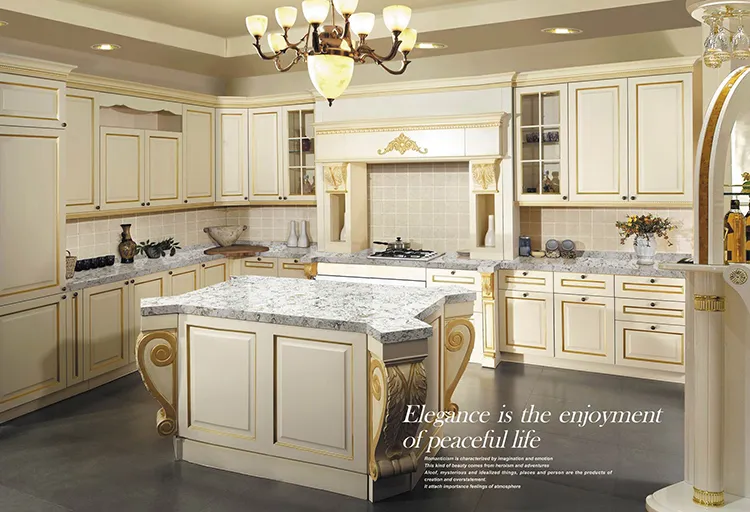
Waste Management and Disposal Costs for Marble Countertops
Waste management is an important part of the marble countertop installation process that needs to be considered. Installing a new marble countertop often means removing the old one. The cost of removing the old material depends on the amount of labor required and the type of material. Some contractors may offer this service, but it usually comes at an additional cost.
As a heavy and fragile material, shipping costs are an important part of the total cost. Especially when shipping marble from overseas, the costs can rise significantly. These costs not only include the shipping itself, but may also involve additional insurance and packaging costs to ensure that the material is not damaged during transportation.
Marble Cost by Type: How Much Does Marble Countertop Cost?
The price of marble countertops varies greatly, mainly depending on its rarity, color, pattern, and origin. Here are a few common types of marble and their price ranges.
1. Carrara Marble Countertops
Carrara marble is the most common type of marble, especially mined in the Carrara region of Italy. It is mainly a soft gray-white color with slight gray or blue veins. This marble is a popular choice in modern kitchen and bathroom designs due to its affordable price and simple appearance. Carrara marble costs about $40 to $80 per square foot, depending on its quality and processing.
2. Calacatta marble countertops
Compared to Carrara, Calacatta marble is more rare and expensive. It is known for its bright white base color and bold gold or gray veins, giving it a luxurious feel. Calacatta marble is widely used in high-end interior designs, such as luxury bathrooms or kitchen islands. Due to its unique pattern and rarity, Calacatta tends to be more expensive, usually between $100 and $250 per square foot.
3. Statuario marble countertops
Statuario marble is another high-end marble known for its pure white base color and richer gray veins. Due to its similar appearance to Calacatta marble, Statuario is also widely used in luxury design projects. Its price ranges from about $50 to $150 per square foot.
4. Danby Marble Countertops
Danby marble is primarily mined in Vermont, USA, and is a very durable marble that is suitable for high-traffic areas such as kitchen countertops and bathrooms. Danby marble is known for its creamy white base color and fine gray veins. Compared to other imported marbles, Danby is more affordable, with prices typically ranging from $60 to $100 per square foot.
5. Cultured Marble Countertops
Cultured marble is a man-made stone made from marble chips mixed with resins and is relatively inexpensive. Although it is not true natural marble, it provides a similar look while having better stain resistance. Cultured marble prices typically range from $30 to $70 per square foot, making it a good choice for consumers on a budget.
6. Macael Marble Countertops
Macael marble is mined in Spain and is known for its classic white and gold stripes. It is a historic marble that is widely used in luxury buildings. The price of Macael is approximately between $70 and $120 per square foot.
7. Pink Marble Countertops
Pink marble is a unique marble whose soft pink hue makes it ideal for bathrooms and other romantic-style spaces. Due to the uniqueness and rarity of the color, pink marble is more expensive, typically between $100 and $200 per square foot.
| Marble Types | Average cost per square foot | Description |
| Carrara marble countertops | Between $40 and $80 | The most common type of marble, it is a soft off-white color with slight gray or blue veins. |
| Calacatta marble countertops | Between $100 and $250 | Rare and more expensive than Carrara marble. It is known for its bright white base and bold gold or gray veins. |
| Statuario marble countertops | Between $50 and $150 | A high-end marble known for its pure white base and richer gray veins. |
| Danby marble countertops | Between $60 and $100 | From Vermont, USA, it is a very durable marble suitable for high-traffic areas such as kitchen countertops and bathrooms. |
| Cultured marble countertops | Between $30 and $70 | A man-made stone made of marble chips mixed with resin, which is relatively inexpensive. |
| Macael marble countertops | Between $70 and $120 | From Spain, it is known for its classic white and gold stripes and is widely used in luxury buildings. |
| Pink marble countertops | Between $100 and $200 | Ideal for bathrooms and other romantic spaces, pink marble is more expensive |
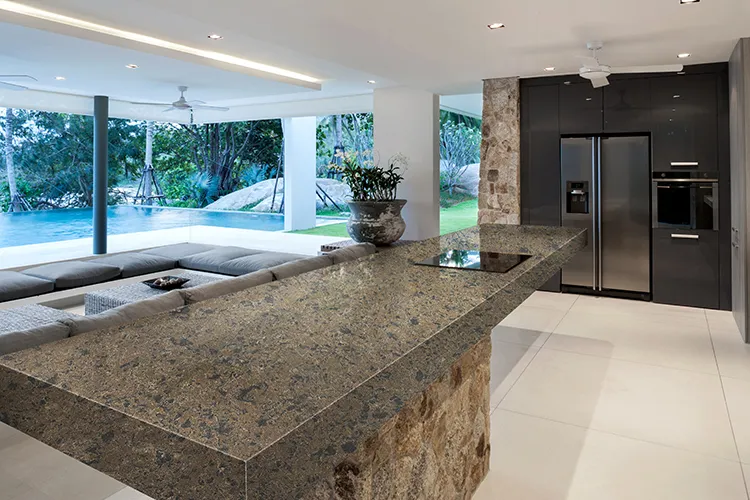
Marble Countertop Pricing Compared to Alternative Materials
When it comes to choosing kitchen or bathroom countertops, there are many other materials to consider besides marble, such as quartz, engineered stone, and granite. So, how do their costs and performance compare to marble?
● Quartz Countertops: Quartz is a man-made material that is similar in price to or even slightly higher than marble, but has better stain resistance. It does not require regular sealing, making it a practical alternative to marble. Quartz prices typically range from $60 to $150 per square foot.
● Granite: Granite is another natural stone with a similar price range to marble. Granite countertops are known for their durability, making them particularly suitable for high-traffic kitchens. Granite prices typically range from $40 to $200 per square foot.
● Engineered Stone: Engineered stone is a more economical option, priced between $30 and $70 per square foot. While it does not have the unique veins and colors of natural marble, it has excellent durability and stain resistance.
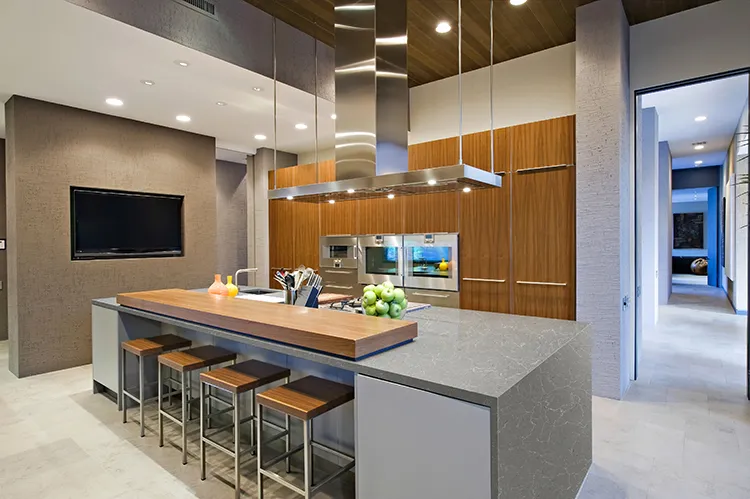
Which type of marble has the highest market value?
In the market, Calacatta marble is generally considered one of the most valuable marbles. Its bright white base and rich gray or gold veins make it a favorite in luxury design projects. Whether in a kitchen island, bathroom countertop, or fireplace accent, Calacatta marble adds a luxurious feel to any room.
What is the difference between solid surface, engineered stone, and marble?
Solid surface materials and engineered stone are common alternatives to marble. Solid surface materials are usually made from a mix of resins and minerals. Their advantages are durability and easy repair, but they can't match the look and feel of marble. Engineered stone countertops offer a more cost-effective option by simulating the veins and colors of marble, but they feel artificial and can't match the uniqueness of natural marble.
Is marble a good choice for kitchen countertops?
Although marble is beautiful and heat-resistant, it's not an ideal choice for all kitchens. Marble is easily corroded by acids (lemon juice, vinegar, etc.), so it needs to be especially careful to maintain. If you are willing to maintain it regularly and clean up any spills immediately, marble can add unparalleled elegance to your kitchen.

